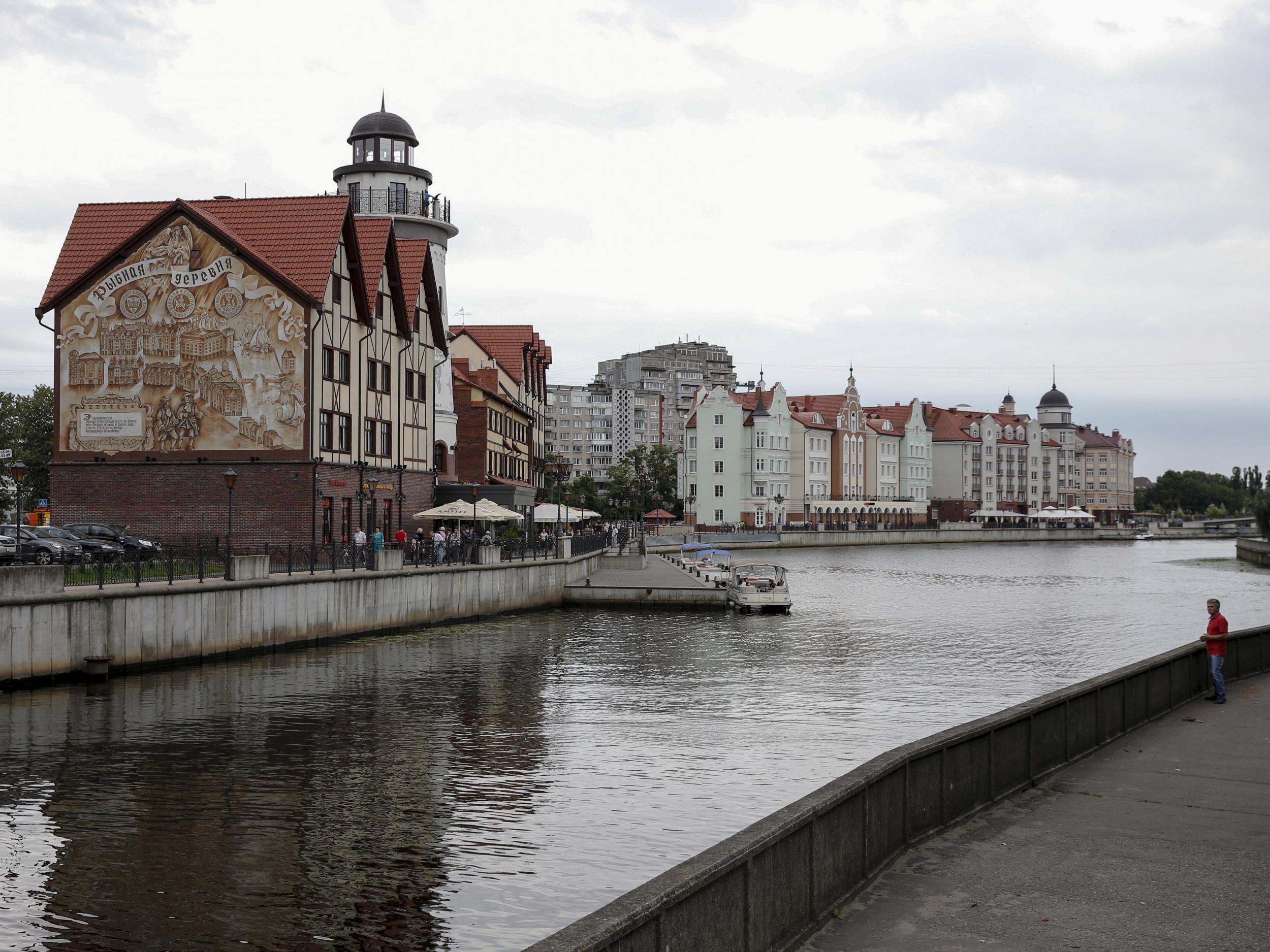How a tiny pocket of Russian land next to Poland could soon become the most dangerous place in Europe
Kaliningrad is a small Russian exclave between Poland and Lithuania

Your support helps us to tell the story
From reproductive rights to climate change to Big Tech, The Independent is on the ground when the story is developing. Whether it's investigating the financials of Elon Musk's pro-Trump PAC or producing our latest documentary, 'The A Word', which shines a light on the American women fighting for reproductive rights, we know how important it is to parse out the facts from the messaging.
At such a critical moment in US history, we need reporters on the ground. Your donation allows us to keep sending journalists to speak to both sides of the story.
The Independent is trusted by Americans across the entire political spectrum. And unlike many other quality news outlets, we choose not to lock Americans out of our reporting and analysis with paywalls. We believe quality journalism should be available to everyone, paid for by those who can afford it.
Your support makes all the difference.Fears over Russian military operations in Europe have been fuelled by reports the country has been bulking up its firepower in a small province nestled between Poland and Lithuania.
Around the size of northern Ireland with a population of nearly one million, the Kaliningrad Oblast region is separate from the rest of Russia and was a closed military zone in the Soviet period.
Polish defence minister Antoni Macierewicz expressed concerns this week that warships with long-range cruise missiles sent to the Russian exclave on the Baltic sea could “change the balance of power” in the area.
“This is an obvious cause for concern,” he told reporters at a Nato meeting in Brussels. “Moving such ships on the Baltic [sea] changes the balance of power.”
Nuclear-capable Iskander missiles were deployed in Kaliningrad this month for the first time in two years, according to a Russian military spokesperson, sparking fears the region could become a flashpoint amid rising animosity between Russia and the West.
Kaliningrad was part of Germany until it was annexed by Russia after World War Two and is the country’s only port that stays ice-free throughout the year.
Servicemen have been seen working in the region to increase security at important bases and further military radar systems are reportedly being constructed.

Tensions have been escalating between Nato states and Russia since the latter’s intervention in Ukraine beginning in February 2014, which was criticised by leaders across the world.
Russia says it believes its borders are under threat as Nato forces draw closer, sparking fears of a potential Cold War-style standoff in the Baltic states as Russia assembles military forces in eastern Europe.
According to Nato strategists, Russia is layering surface-to-air missiles in Kaliningrad in an effort to block off Nato's air access to the three Baltic states and areas of Poland.
“The main challenge is not individual events or deployments,” Nato Secretary-General Jens Stoltenberg told Reuters.
“It is the overall picture, where we see a substantial increase in Russia's capabilities at sea, in the air and on land; exercises with a more aggressive patterns.”
“We will not mirror what Russia is doing,” said Mr Stoltenberg. “We are not in a Cold War situation.”
Norway, which has a long border with Russia, will allow 330 US troops to be stationed on its soil for a limited period from next year, the first time foreign troops have been posted on its territory since the end of World War Two.
Mr Stoltenberg hopes to convene another Nato-Russia Council – the forum bringing together Grushko, Russia's top diplomat to the alliance, and Nato envoys - in the next few weeks, diplomats say.
Russia unveiled its biggest ever nuclear missile this week, said to be powerful enough to almost destroy an area the size of New York state with a single blast.
Pictures were released by the Makeyev Rocket Design Bureau of the ballistic missile, nicknamed the ‘Satan II’, which could go into production by 2018, according to Russian news site Russia Today.
Subscribe to Independent Premium to bookmark this article
Want to bookmark your favourite articles and stories to read or reference later? Start your Independent Premium subscription today.
Join our commenting forum
Join thought-provoking conversations, follow other Independent readers and see their replies
Comments